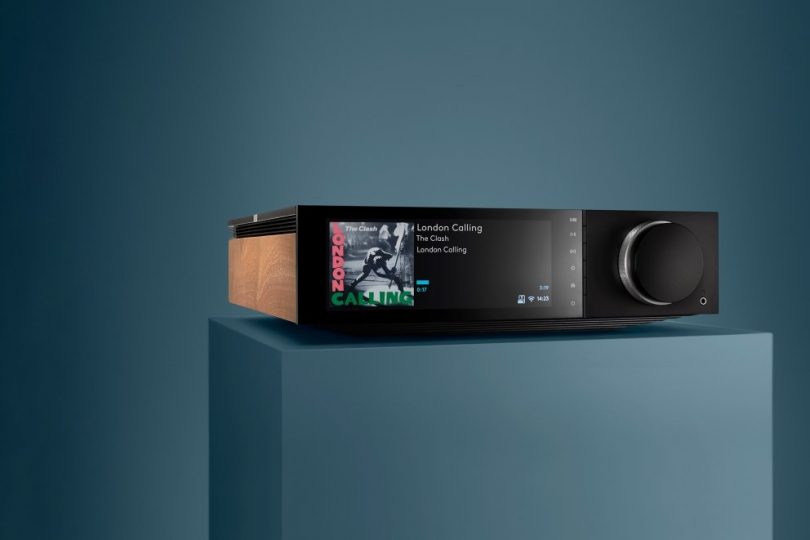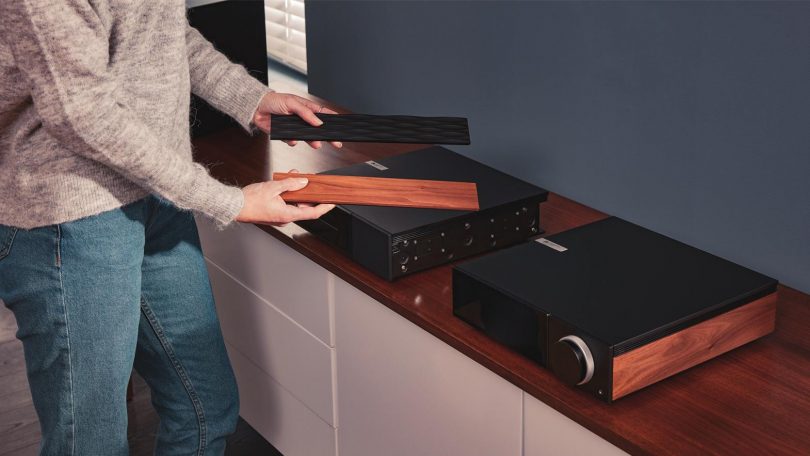When it comes to home audio, I’m apt to identity as an enthusiast rather than anything near the committed obsessiveness of an audiophile. Yes, sound matters prominently when it comes to any options considered – but so does simplicity, accessibility and aesthetics, all before budget even comes into consideration (and let me tell you, it comes fast and hard for the wallet once you venture past the consumer end of audio gear). Living in a modest sized home also means the days of floor standing speakers and a stack of discrete components have fallen by the wayside for more integrated and simplified wi-fi powered solutions the last few years. But along came the Cambridge Audio Evo 75, an all-in-one network streaming system that cuts out compromise from the equation, delivering a high degree of performance with a customizable design that feels right at home alongside everything else that doesn’t require being plugged in.
Over its span of 50 years, the English hi-fi company Cambridge Audio has carved out itself a place as one of the more established and respected brands within the audiophile realm, which makes the Cambridge Audio Evo 75 and 150 all-in-one players (alongside their complementary Evo S speakers and Evo CD) a notable diagonal incursion from the high end toward a more “lifestyle” oriented offering. It’s certainly one of the best looking audio component designs today, one that immediately looks like you can set it up within a living room, den or entertainment room and appear like it’s always meant to be on that bookshelf, cabinet or credenza.
Credit to Cambridge Audio’s lead designer Ged Martin for imparting both the Evo 75 and Evo 150 with a compact footprint embellished with a warmly contemporary design, one inspired by the brand’s 1968 designed P40 amplifier, the vague notion of “furniture and interior design”, alongside principles outlined by The Design of Everyday Things by Donald Norman, a cognitive scientist and usability engineer whose research emphasizes the importance of objects designed with details clearly communicating their function.
And to this point the Cambridge Audio Evo’s most prominent control – its large front concentric rotary dial – is both obvious to use and delivers a satisfying and confidently significant feel with every rotation. The primary front dial controls volume, while a secondary knurled aluminum dial is used to scroll through source options. A narrow band of vertically oriented buttons on the front is used to access power, playback controls and Bluetooth connectivity. An included remote offers access to these controls, as does a compatible app.

The Cambridge Audio Evo 75 is equipped with an ESS Sabre ES9016K2M DAC, the Audio Evo 150 with an ESS Sabre ES9018K2M, each capable of processing music at up to 32 bits and 384 kHz.
The only real “miss” of this pared down physical interface is the absence of a touchscreen, something the bright and colorful 6.8-inch LCD panel display seems to promise, especially since the two-thirds of the Evo’s front is dedicated to the screen. Thankfully the display is still very useful, displaying album artwork and function legibly from normal listening distance, and the reality is most users will probably never walk over to control their system manually, so trained we’ve become to the convenience of apps.
One of the coolest features of the Evo is purely aesthetic. Recognizing interior decor tastes vary, Cambridge Audio includes two different sets of interchangeable snap-on magnetized panels – one set done in a mid-century style of walnut wood panels, the other a rippling contemporary patterned black set made from a recycled paper called Richlite. The walnut side panels look especially handsome as a contrast to the black anodized aluminum chassis, and we hold out hope Cambridge Audio will offer additional finishes and textures as an optional accessory noting the success of this design.
Amplification is delivered by way of Hypex NCore Class-D amplifiers, an energy efficient solution chosen to deliver 150 watts per channel for the more premium Evo 150, and a still more than sufficient 75 watts per channel with the Evo 75 (the Evo 75 differs from its premium sibling in subtracting a USB port, balanced XLR inputs, and a phono stage in the rear).
If this all sounds like gobbledygook, rest assured the system is nearly plug-and-play to set up, and within just a few minutes after adding speakers, you can be enjoying music via a plethora of streaming services like TIDAL Masters, Spotify Connect, Apple AirPlay 2, Chromecast, alongside more audiophile niche services like Roon and Qobuz using Cambridge Audio’s StreamMagic app.
In testing, the Evo 75 produced a near-revelatory performance across numerous genres of music, characterized by an open soundstage with full-bodied gusto. I ended up revisiting all of my favorite tracks in lossless high-resolution MQA format, spanning my teenage year Brit pop favorites to current day regulars like Nine by Sault at volumes I had never felt inclined to investigate for years, lest it all become one morass. For someone who admittedly has become ensconced with the “good, but not great” performance of consumer-grade audio over the years out of convenience, the system proved so invigorating after a few days of listening, I caved in and ordered a pair of matching $750 Cambridge Audio Evo S speakers in hopes of realizing the system’s full potential.
Just like the soon-to-be-released Evo CD transport, the matching bookshelf speakers are designed to seamlessly complement the Evo player both acoustically and aesthetically. Outfitted with black silk dome tweeter, an anodized aluminum mid-bass driver, and encased within a medium density fiberboard cabinet with gold electroplated speaker binding posts, the paired setup looks great even while turned off (but best when driving music loudly).
The $2,250 Cambridge Audio Evo 75 (or $3,000 Evo 150) is an expensive proposition, since you’ll still need to add a pair of speakers to begin listening. But if you’re looking for the easiest and most elegant entryway into the realm of audiophile level performance without having to worry about deciphering the deep ocean of terminology, specs and options out there – or worrying about the room to house a system – this all-in-one streaming audio system really does make a convincing argument that subtractive simplicity can be sublime.
from WordPress https://connorrenwickblog.wordpress.com/2021/07/15/cambridge-audio-evo-75-and-evo-150-elegantly-simplify-hi-fi/










No comments:
Post a Comment